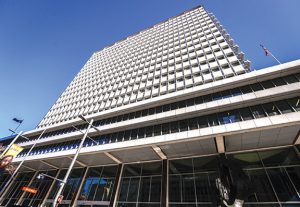Bloomberg
Australia’s central bank said Russia’s invasion of Ukraine has the potential to prolong a period of elevated consumer-price growth and is clouding the economic outlook, minutes of its March 1 policy meeting showed.
“The war in Ukraine and the associated increase in energy prices had created additional uncertainty,†the Reserve Bank said in the release on Tuesday. A key issue was “whether recent price adjustments represented a one-off shift in the level of prices or the beginning of a period of ongoing price
increases.â€
Governor Philip Lowe has adopted a more hawkish tone recently, saying an interest rate rise is plausible this year as Russia’s invasion of Ukraine threatens to further fuel inflation and alter households’ price expectations. That comes on top of a local economy that’s already recovering robustly, with low unemployment and strong consumer spending.
The war is a “major new source of uncertainty,†the minutes showed. The RBA says that, unlike other central banks that are struggling to contain inflation, it still has time to see how developments play out.
“Inflation in Australia had picked up, but was still lower than in many other countries,†the minutes said.
“Members noted headline inflation would increase by more than underlying inflation in the near term because of the effect of global developments on petrol prices,†the bank said. “The board is prepared to be patient as it monitors how the various factors affecting
inflation in Australia evolve.â€
The RBA’s cash rate currently stands at a record-low 0.1% and Lowe’s patience contrasts with counterparts from Washington to Wellington, who are preparing to hike rates imminently or have already done so.
Lowe is using the additional time to test how far he can push down unemployment before wages take off. The governor still maintains that inflation’s return to the RBA’s 2-3% target will only be sustainable if it’s underpinned by stronger pay gains.
“Across industries and states, wages growth outcomes had been unusually tightly clustered in the low-to-mid 2% range,†the minutes said. “While the share of jobs recording wage increases of 2–3% had recently returned to around pre-pandemic levels, the share of jobs with wage increases above 3% had been little changed in recent quarters.â€
Despite the RBA keeping its policy options open, traders are wagering that rate liftoff will come in the months ahead, while economists have settled on August as the most likely timing of the first hike.
 The Gulf Time Newspaper One of the finest business newspapers in the UAE brought to you by our professional writers and editors.
The Gulf Time Newspaper One of the finest business newspapers in the UAE brought to you by our professional writers and editors.
